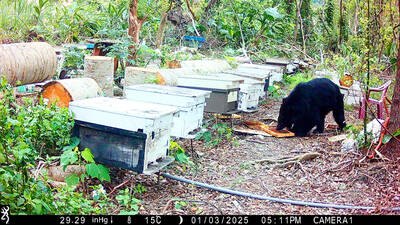Amid criticism that the widespread use of dispatch workers is a major cause of the nation’s wage stagnation, Minister of Labor Pan Shih-wei (潘世偉) on Thursday said that government agencies should set a good example and bar the use of such workers.
Dispatch workers are people hired by employment agencies and contracted out to organizations for varying lengths of time. They represent a source of cheap and flexible labor for employers, but critics contend that the system is being abused and the workers do not get standard benefits guaranteed by law.
Pan suggested that government agencies stop filling jobs through employment agencies and gradually fill them with contract workers, who are protected by the Labor Standards Act (勞動基準法).
The ministry is promoting a law stipulating that the number of dispatch workers should not exceed 3 percent of a company or a government agency’s work force.
However, the large number of dispatch workers in government agencies has become an excuse for business groups to oppose the restriction.
The Executive Yuan allows its affiliated agencies to use a maximum of 15,514 dispatch workers. The number of such workers totaled 10,296 people in the final quarter of last year, making government agencies one of the largest users of dispatch workers.
The Council of Agriculture was the central government agency using the most dispatch workers — 2,754 people — according to official statistics.
Coming in second was the Ministry of Economic Affairs with 2,265 people, followed by the Ministry of Health and Welfare with 978.
The council said it mostly used dispatch workers to fill a shortage of field-survey staff, while the economics ministry said most of its dispatch workers were working at state-owned enterprises.
In response to Pan’s proposal, Directorate-General of Personnel Administration Deputy Minister Chang Nien-chung (張念中) said it would be difficult to bar the use of dispatch workers in government agencies because of the need to reduce personnel costs.
Huai Hsu (懷敘), a section chief at the government agency, said that instead of banning dispatch workers, more focus should be put on protecting the rights and benefits of such workers.

SHIPS, TRAINS AND AUTOMOBILES: The ministry has announced changes to varied transportation industries taking effect soon, with a number of effects for passengers Beginning next month, the post office is canceling signature upon delivery and written inquiry services for international registered small packets in accordance with the new policy of the Universal Postal Union, the Ministry of Transportation and Communications said yesterday. The new policy does not apply to packets that are to be delivered to China, the ministry said. Senders of international registered small packets would receive a NT$10 rebate on postage if the packets are sent from Jan. 1 to March 31, it added. The ministry said that three other policies are also scheduled to take effect next month. International cruise ship operators

NUMBERS IMBALANCE: More than 4 million Taiwanese have visited China this year, while only about half a million Chinese have visited here Beijing has yet to respond to Taiwan’s requests for negotiation over matters related to the recovery of cross-strait tourism, the Tourism Administration said yesterday. Taiwan’s tourism authority issued the statement after Chinese-language daily the China Times reported yesterday that the government’s policy of banning group tours to China does not stop Taiwanese from visiting the country. As of October, more than 4.2 million had traveled to China this year, exceeding last year. Beijing estimated the number of Taiwanese tourists in China could reach 4.5 million this year. By contrast, only 500,000 Chinese tourists are expected in Taiwan, the report said. The report

The Forestry and Nature Conservation Agency yesterday launched a gift box to market honey “certified by a Formosan black bear” in appreciation of a beekeeper’s amicable interaction with a honey-thieving bear. Beekeeper Chih Ming-chen (池明鎮) in January inspected his bee farm in Hualien County’s Jhuosi Township (卓溪) and found that more than 20 beehives had been destroyed and many hives were eaten, with bear droppings and paw prints near the destroyed hives, the agency said. Chih returned to the farm to move the remaining beehives away that evening when he encountered a Formosan black bear only 20m away, the agency said. The bear

Chinese embassy staffers attempted to interrupt an award ceremony of an international tea competition in France when the organizer introduced Taiwan and displayed the Republic of China flag, a Taiwanese tea farmer said in an interview published today. Hsieh Chung-lin (謝忠霖), chief executive of Juxin Tea Factory from Taichung's Lishan (梨山) area, on Dec. 2 attended the Teas of the World International Contest held at the Peruvian embassy in Paris. Hsieh was awarded a special prize for his Huagang Snow Source Tea by the nonprofit Agency for the Valorization of Agricultural Products (AVPA). During the ceremony, two Chinese embassy staffers in attendance